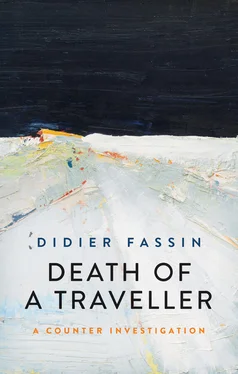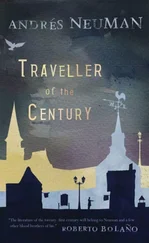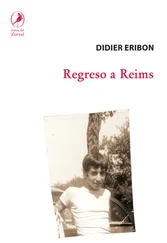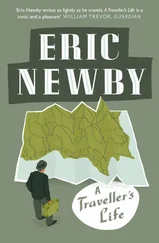But, in order to craft this masonry, the facts need to be tracked down to the smallest detail. Creative freedom is to some extent restricted by the commitment to truth-telling. Thus, when the text says that the officer thinks you never know with Travellers, and that he believes that his was the fatal shot, it is because during his deposition he states that Travellers represent a difficult community for them and, later, that he was probably the one who killed the man. When the text notes that the father thinks the evacuation of the officer was staged to make it look as if he was injured, and imagines that the shots could have led his oxygen bottles to explode and thus transformed his son into a terrorist, these are points made in one of the interviews. Many more examples could be cited, almost line by line. Similarly, the terms employed in the text reproduce as far as possible the words used by the speakers. The gendarmes call their victim the target ( la cible ), the objective ( l’objectif ), the individual or the man; they say that they want to neutralize ( neutraliser ) him, which means to kill him, and euphemistically talk of handling ( prendre en compte ) his father and his brother when they pin them down and handcuff them. The family uses expressions typically belonging to the language of the Roma to speak of the gendarmes ( schmitts, clistés, cagoulés ), translated here as cops, whose semi-automatic weapons are Tommy guns ( mitraillettes ); the lean-to of the house is named a shed ( cabouin ) or a barn ( grange ). When referring to the Travellers, the public prosecutor alternates the slightly pejorative noun gypsy ( manouche ) and the common phrase travelling people ( gens du voyage ). However, the point is not to incorporate verbal tics, syntax errors or clumsy expressions that would undermine the credibility of the speakers and distract readers. Hence the refusal to use the realist effects of quotation marks and dialogues. Furthermore, it is important to remember that, while interviews do allow access to the words of the speaker, records of depositions are not word-for-word transcriptions but summaries of what the court clerk heard. They thus do not constitute a complete reproduction.
No proper name of any person or, indeed, of any place appears, nor any date. This choice of anonymization arises not only out of ethical concerns to protect the individuals involved or legal considerations to protect the author; both these protections are illusory given that modern search engines make it a simple matter to identify all the details of such an event. Anonymization is used above all as a way to draw out the broader meaning of this death, the conditions of its possibility, the actions of the gendarmes, the practice of judges, the campaign led by the family. Specific though this story is, it nevertheless reveals fundamental features of the state’s law-enforcement institutions and of the punitive treatment of Travellers: it is not merely a regrettable incident. One exception is made to this rule of anonymization: the forename of the Traveller. Refusing to consign him to anonymity is a way of respecting the memory of the person who is, ultimately, the only victim of the events that occurred one day in early spring at his parents’ farm. The fragile trace of a life cut short. An intimate connection through which, for his family, he lives on.
But the plan to render an account of the case in all its complexity soon came up against a major dilemma with regard to the different versions. The problem is the difficulty of recounting the events in an even-handed way. The separate accounts, each one written from a subjective point of view, seek to reconstruct how each person experienced the scene, the events that preceded it and those that followed. This approach inevitably results in the presentation of some experiences that were actually lived and others that were falsified. For whatever one decides about who is telling the truth, the two versions presented, that of the relatives and that of the gendarmes, are irreconcilable. One of them at least is mistaken, and possibly even deliberately false. In order to get as close as possible to subjectivities, experiences should therefore be recounted as they were supposed to have really been lived, including the awareness of deceit, even if this version is radically different from what the individuals concerned said in interviews or depositions. Which effectively would come down to no longer respecting the accounts of the protagonists, introducing from the outset the perspective of an external observer assumed to know what did happen. This is not strictly speaking a moral dilemma, in the sense of choosing the side one thinks speaks the truth (assuming that there is one side that holds this truth). It is simply the logical conundrum of having to reconstruct a scene as if the protagonists had indeed experienced it in the way they tell it, even when they are deliberately misleading their interlocutors. And this has to be done without being able, and without wishing, to decide in advance which of them are telling the truth.
The way out of this dilemma adopted by the sociologist was as follows. In the first stage, he worked on the assumption that all the protagonists were telling the truth, and therefore he adopted their point of view on the basis of the versions they gave. The parallel accounts of the first officer and the father, the second officer and the mother, as reconstructed, are based strictly on the information each of these individuals presented as the truth. This obviously results in entirely incompatible stories. The judicial system chose between them. The public prosecutor in his early statement, and the examining magistrate in her decision, came down in favor of the officers and against the family. The investigation might end there, and this is indeed what almost always happens. But we can also take into consideration the fact that, in the judiciary, not all individuals are treated equally, and not all words are given equal weight, particularly when law-enforcement officers are accused, and also when either the plaintiffs or the accused are Travellers. In the second stage, the sociologist therefore attempted to re-examine the different versions, this time in order to decide whether there were reasons to think that some of them were more consistent than others. He first presented a general discussion of the principles underlying the search for truth and the detection of lies. He then analyzed the different versions, both by drawing out any internal contradictions and improbabilities and by comparing them with the set of external evidence from other testimonies, expert opinions and technical reports. This process resulted in another possible reading of the facts of the case.
In short, the initial intention to give even-handed treatment to the versions of the officers and the family, respecting both equally, did not prevent the subsequent rigorous dissection of the legal arguments and verdict and the presentation of a version based on rational grounds of probability. To venture a parallel from cinema, we might say that the book begins in the manner of Rashōmon and ends in the spirit of Twelve Angry Men . And this twostage process is in fact not unlike the construction of the object of study itself, a criminal case. Indeed, the judicial procedure first produces depositions, which are more or less divergent versions of the facts, then an investigation, which examines all the evidence gathered, and finally conclusions. The method followed by the sociologist, right through to the writing-up of his work, ultimately follows a similar pattern. Hence some repetitions, mirroring the process of the counter-investigation. This process might be called a sociological investigation, in reference to but in contrast with the criminal investigation, because it is not limited to the individuals questioned but expands its interrogation to the social conditions of possibility of the events concerned.
Читать дальше












